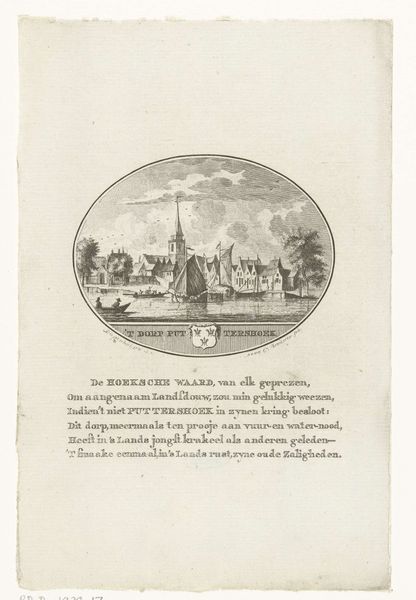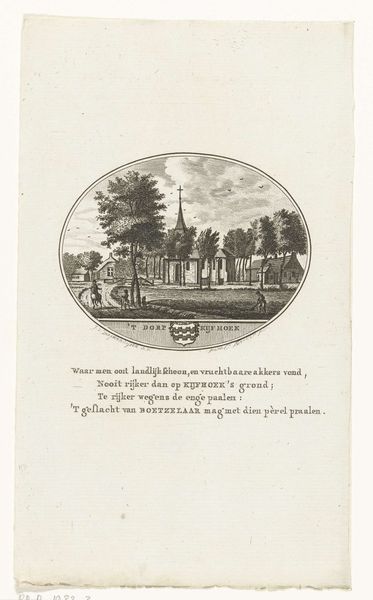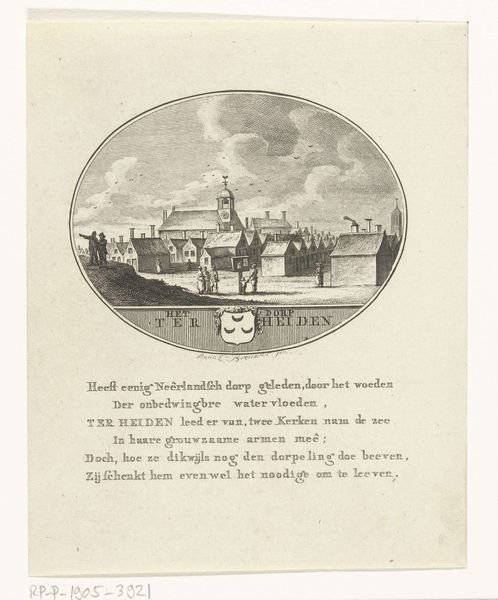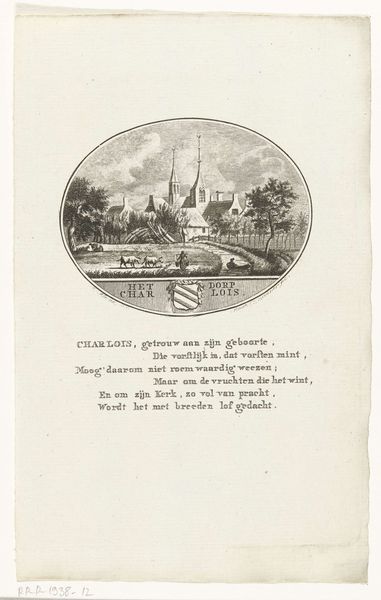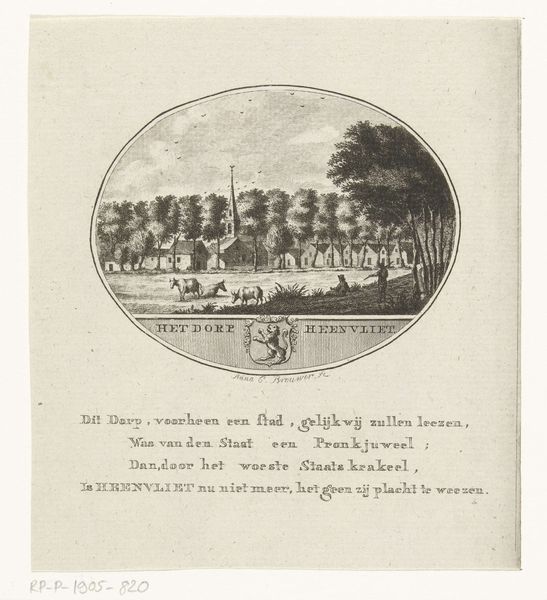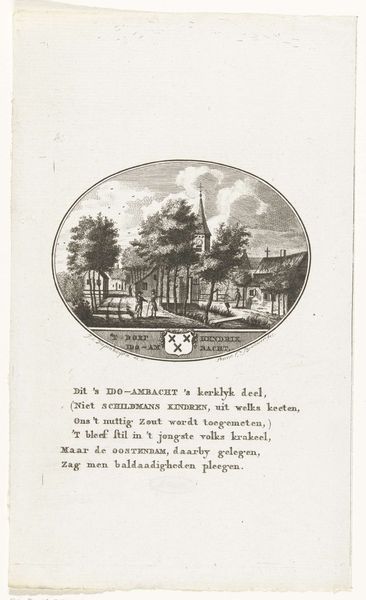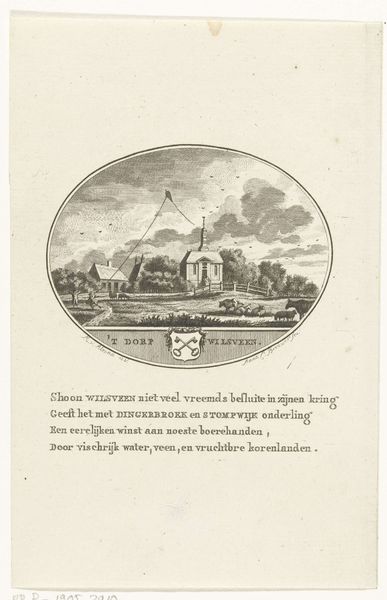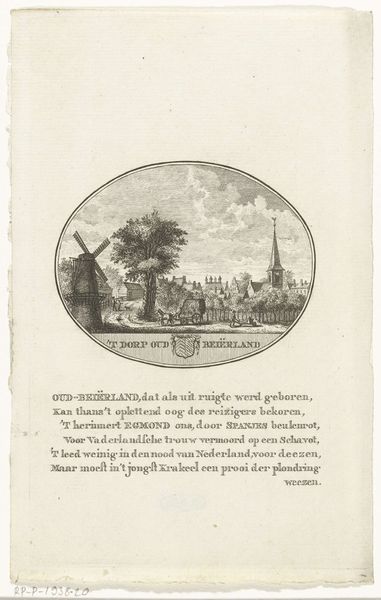
print, engraving
#
dutch-golden-age
# print
#
landscape
#
15_18th-century
#
cityscape
#
engraving
Dimensions: height 155 mm, width 140 mm
Copyright: Rijks Museum: Open Domain
Curator: Ah, Oostzaan… looking at this print, "Gezicht op het dorp Oostzaan," by Anna Catharina Brouwer from around 1794-1796 at the Rijksmuseum, you almost feel the quiet rhythm of village life. The houses, the tiny figures tending to what looks like farmland…it’s all so neatly contained within that oval. Editor: It’s incredibly detailed for such a small image, and the pastoral scene is definitely charming, but I can't shake this feeling that the framing, the almost picture-postcard feel of it all, keeps me at arm's length. What do you think gives it that somewhat removed feeling? Curator: Interesting. Perhaps it's because this image exists on multiple levels. It presents this calm surface, but prints like these were also about communicating ideas, reinforcing identities. This particular piece seems to romanticize the village. Does it ring true, though, or does it feel staged? Think about what’s *not* shown... What choices did the artist make in what they included – and excluded? Editor: Hmmm…you’re right. There's no mess, no hardship. It feels carefully curated – ironically, just like the poem inscribed below the image – to show the village in an idealized state. Maybe it's a form of early tourism marketing! A way to promote Oostzaan. Curator: Precisely! Or even to create a specific sense of national pride tied to rural landscapes. Look closely at those little details again, the subtle contrasts between light and shadow… Can you see any evidence of industry hidden within the domesticity? Editor: Oh, I see now…the chimneys. Perhaps it wasn't such a sleepy backwater after all? Curator: Exactly. These prints can be deceivingly complex little packages of meaning. The layers! Editor: So much more than just a pretty picture! Thanks for that shift in perspective. Curator: My pleasure. Art whispers, we just have to listen closely.
Comments
No comments
Be the first to comment and join the conversation on the ultimate creative platform.
